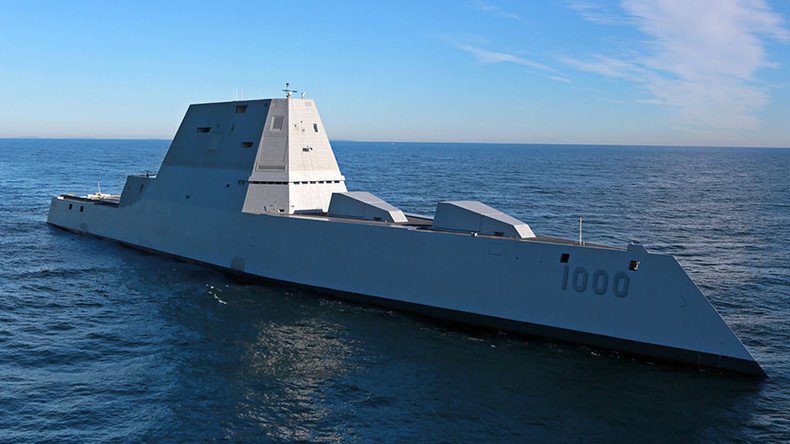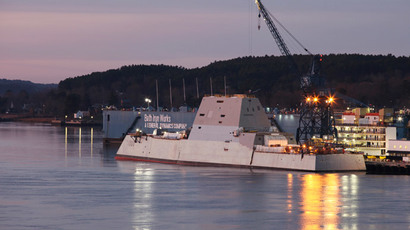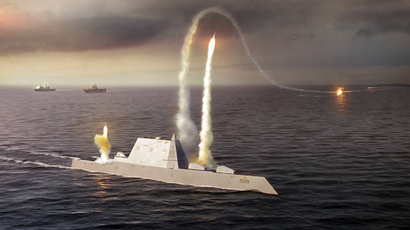Too stealthy: New off-radar US destroyer poses maritime traffic risks

Ongoing at-sea tests of the most advanced and expensive destroyer ever, the USS Zumwalt (DDG 1000), have exposed an unexpected problem. Perceived as a medium-sized fishing boat on radars, its sheer size shocks ill-prepared fishermen when it approaches.
Maine lobsterman Lawrence Pye experienced the “Zumwalt effect” for himself. He saw something that appeared on his radar screen to be a 15-meter fishing boat, but it materialized into a gigantic 186-meter warship. The destroyer was returning to the Bath Iron Works shipbuilding yard after a series of sea trials.
US Navy’s largest guided-missile destroyer begins first sea trials https://t.co/Lt2yFlGlEKpic.twitter.com/QTD8TLlNpb
— RT America (@RT_America) December 8, 2015
“It's pretty mammoth when it's that close to you,” the Associated Press cited Pye as saying.
It appears highly unlikely that the USS Zumwalt could actually run into any vessel. The destroyer’s advanced radars ensure it can dodge any collision. Yet for other ships that might encounter the man-of-war, its true appearance could be quite a surprise in many respects.
Though it is the size of a WW1-era battleship, the Zumwalt's futuristic, angular-shaped design aimed at deflecting radar waves, its composite deckhouse, low-noise electric propulsion and stealth coating combine to make the DDG-1000 50 times harder to detect, program manager Captain James Downey said.
To get a better idea of exactly how stealthy the ship really is, the USS Zumwalt’s sea trials in March were dedicated to testing the ship’s radar signature with and without reflective material hoisted on its halyard, Downey said.
The reflectors positioned on the Zumwalt were metal cylinders similar to those used by other ships in case of fog or poor visibility in bad weather conditions, in order to augment the vessel’s radar signature and save civilian captains from heart attacks.
The Zumwalt will be undergoing more tests in 2016 before being handed over to the US Navy. Yet even after being commissioned in October in Baltimore, the ship will continue testing before becoming fully operational in 2018.
However, the Zumwalt has already performed a rescue operation. Last December, a Coast Guard rescue helicopter was unable to evacuate fisherman Dale Sparrow, who had suffered a heart attack. The Zumwalt that happened to be nearby made for Sparrow’s boat and took the man on board.














